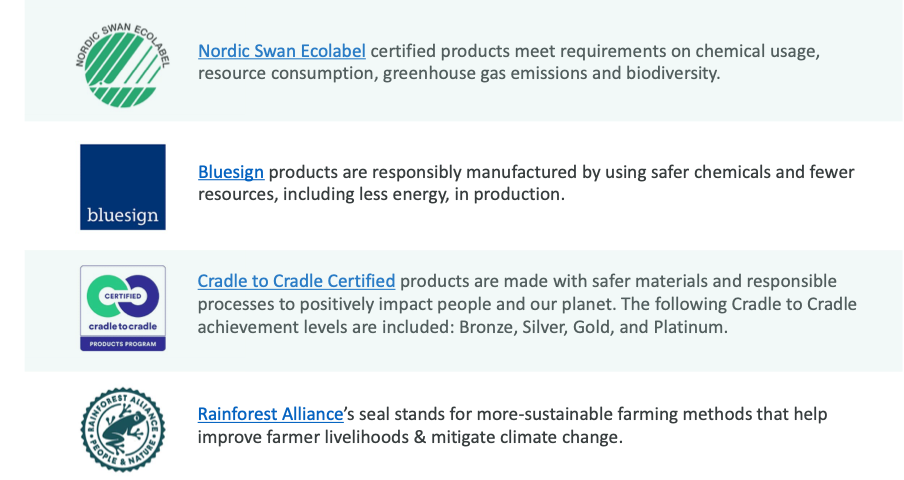CONTROVERSIES FROM MISS-MANAGED NATURAL LOSS RISKS
Global controversies surrounding mismanaged natural loss risks have been brought to the forefront. As reported by Mongabay, Brazil’s $29 million deforestation fine highlights global controversies over mismanaged natural loss risks. The fine targets soy traders and farmers involved in illegal deforestation, raising questions about balancing economic growth with environmental sustainability. Five global commodities firms, namely Cargill Inc, Bunge Ltd, ABC Indústria e Comércio SA, JJ Samar Agronegócios Eireli, and Uniggel Proteção de Plantas Ltda, were penalized over 24.6 million Brazilian reais (US $6.5 million) for purchasing soy cultivated on lands lacking the necessary deforestation permits. More recently, China Railway 14th Bureau Second Engineering Co., Ltd. was fined CN¥520,200 yuan for unauthorized change of forest land use on Jan 7, 2024. The task of managing natural loss risks has growing importance, and the adaptation of TNFD has become an essential strategy for global business leaders.
EMERGING TNFD EARLY ADOPTERS
Over 320 organisations from 46+ countries have agreed to disclose their nature-related risks and opportunities, using the Taskforce on Nature-related Financial Disclosures (TNFD) Recommendations. Early adopters include leading companies and financial institutions with a total of US$18 trillion in market value and AUM. They will report on their nature-related impacts and dependencies in their annual corporate disclosures for FY2023, FY2024, or FY2025. Some of the notable adopters are NBIM (the world’s largest single shareholder) and 7 of the 29 GSIBs (the most influential banks in the world), according to TNFD.

Source from TNFD.
INTERACTION ACROSS INTERNATIONAL FRAMEWORKS & STRATEGIES
The TNFD recommendations serve as a voluntary guideline that helps organizations measure and report their dependencies and impacts on nature, as well as the risks and opportunities arising from them. The framework has also been designed to be consistent with the new S1 and S2 standards on sustainability reporting published in mid-2023 by the International Sustainability Standards Board (ISSB) as well as existing nature and biodiversity impact reporting standards provided to market participants by the GRI.
Furthermore, the European Financial Reporting Advisory Group (EFRAG) has announced a cooperation agreement to further advance Nature-related Reporting with the TNFD. The cooperation agreement builds on a multi-year collaboration reflected in the European Sustainability Reporting Standards (ESRS, the mandatory sustainability reporting framework in the EU under CSRD - Corporate Sustainability Reporting Directive) adopted by the European Commission in July 2023. All 14 recommended disclosures of the TNFD are addressed in the ESRS.
The global biodiversity agenda has emerged from the landmark agreement through the “Kunming-Montreal Global Biodiversity Framework” adopted at the 15th Conference of the Parties to the Convention on Biological Diversity. Since then, policymakers have been working on developing biodiversity conservation strategies and action plans for the next decade creating a huge gap for businesses to fill in with nature-positive models.
For instance, the recently released China’s Biodiversity Conservation Strategy and Action Plan (2023-2030) is a national-level plan that aims to achieve effective conservation, restoration, and sustainable use of biodiversity in the next eight years. The plan proposes four strategic goals, namely, by 2030, biodiversity will be effectively protected, ecosystem, species, and genetic diversity will be effectively conserved, the policy and legal system for biodiversity conservation and the mechanism for sustainable use of biological resources will be improved, and protecting biodiversity becomes a conscious action of the public. The plan also identifies 27 priority actions, covering aspects such as biodiversity mainstreaming, addressing threats to biodiversity loss, sustainable use and benefit-sharing of biodiversity, and modernization of biodiversity governance capacity.
THE BUSINESS CASE
There are numerous opportunities and risks in the transition to nature-positive business models.
Reducing costs and risks associated with natural, and environmental degradation, such as loss of productivity, regulatory fines, reputational damage, and litigation.
Enhancing competitiveness and innovation by improving resource efficiency, creating new products and services, and accessing new markets and customers.
Source: From UNFCCC, Race to Zero, and World Economic Forum (2020).
Attracting and retaining investors, employees, and stakeholders who value environmental and natural performance, and aligning with global frameworks and standards, such as the Sustainable Development Goals, the Paris Agreement, and the TNFD Recommendations.
Nature-related risks can also arise from the transition to a nature-positive economy, such as changes in regulations, consumer preferences, market conditions, and reputational factors. Businesses that fail to adapt to these changes can face increased costs, liabilities, and competitive disadvantages.
For example, some examples of Amazon Climate Pledge Friendly ecolabels and certifications that could help boost sales and promote nature-positive products are:
Source: GC Insights, information from Amazon Climate Pledge Friendly Program
NEXT STEP
For businesses to capture these opportunities and manage the potential risks, GC Insights is helping businesses and financial institutions utilize the TNFD recommendations as a disclosure framework to assess the size of these opportunities and risks related to nature and biodiversity. We believe that TNFD will influence the development of natural-related reporting policies with the widely used four-pillar approach (Governance, Strategy, Risk & Impact Management, Metrics & Targets) adopted by EU ESRS, ISSB, and the regions announced mandatory sustainability reporting with ISSB) for nature.
Nature-related disclosures require the identification of nature-related impacts and dependencies, materiality and exposures of businesses, natural-related data and mapping of footprint and scopes, scenario analysis, and the four-pillars approach of TNFD. Contact GC Insights today to discover how to become a TNFD adopter and benefit from assessing and reporting on nature-related risks and opportunities. We can help you:
Registration for TNFD adopters is opening soon. TNFD Adopters are organizations (report preparers) that register their intention to start making public disclosures aligned with the TNFD Recommendations in their corporate reporting in respect of their financial years 2023, 2024, or 2025.
In addition to making the TNFD-aligned disclosures available to your investors alongside the annual financial reports, your company should publicly publish just the TNFD disclosures (on your company website, perhaps alongside your TCFD disclosures). In addition, the TNFD recognizes that organizations around the world report on different financial years and publish their annual reports at different times of the year as a result. Contact us to make your TNFD adaptation journey easier!
Read more about TNFD and our top tips for measuring biodiversity impact and setting biodiversity targets here:
For guidance and recommendations on Nature-Related Disclosures with TNFD, please visit: https://www.gc-insights.com/report/tnfd-recommendations-for-nature-related-disclosures-published
For an overview of international actions on biodiversity, methods for measuring biodiversity for companies and assets, and the latest recommendations from the TNFD for reporting on biodiversity, please visit: https://www.gc-insights.com/report/biodiversity:-emerging-trends-&-measurements
For highlights of sector exposures to nature loss and their dependence on nature and the UN’s “30 by 30” biodiversity targets, and more biodiversity insights for investors, please visit: https://www.gc-insights.com/report/“30-by-30”-biodiversity-target-for-investors
Contact us if you would like to discover more topics in nature and biodiversity, targeted research is also available. For example, this report discusses the importance of the "Blue Economy" and "Water Footprint" as Key Performance Indicators (KPIs) for asset managers, highlighting the role of water resources management, water risks management, and the potential financial impacts of water risks. Read more here: https://www.gc-insights.com/report/“blue-economy”-%26-“water-footprint”-as-kpi-for-asset-managers




